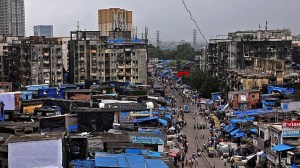Stay updated with the latest - Click here to follow us on Instagram
Dry spell brings saffron crop down to record low
Dr Firdous Nehvi, told The Indian Express that apart from rainfall, normal temperatures in the valley were five degrees above normal in both September and October and also affected the flowering of the crop.
 As per the Meteorological department in September, October and November, Srinagar received a cumulative rainfall of 27 mm, which is a third of the normal, 96mm rain, for this period.
As per the Meteorological department in September, October and November, Srinagar received a cumulative rainfall of 27 mm, which is a third of the normal, 96mm rain, for this period.
Saffron production in the Kashmir Valley is at a low of less than 1 tonne, “the lowest in the last 50 years”, the J&K Saffron Growers Association has said. The continuing dry spell in the valley has adversely affected saffron production. Growers stated that the yield this year has been less than 1 metric tonne from 3,200 hectares of land in Pampore, down from 15-17 metric tonnes per year.
The president of the J&K Saffron Growers Association, Abdul Majeed, told The Indian Express that the crop sufferedbecause of low moisture in the soil and little to no rainfall over the last four months. “We have produced less than one tonne of saffron this year and all saffron farmers have suffered losses because of this dry spell. It is the lowest in the last 50 years.”
Saffron grows in four districts — Pulwama, Srinagar and Budgam in Kashmir and Kishtwar in Jammu. The growth of the saffron bulb, planted in the second or third week of August, depends heavily on availability of water in September, before it is harvested around the last week of October.
Javed Ahmad Ganaie, a saffron grower in Samboora, Pampore, said even if the plant receives a minimum 24 hours’ rainfall once a month, that would suffice. “This year there was no rainfall, the bulb failed to grow,” Ganaie said. His saffron crop yield this year dropped 80 per cent. He is looking at a loss of approximately Rs 10 lakh.
The current market price per kilogram of saffron is between Rs 1.75 lakh to Rs 2 lakh.
As per the Meteorological department in September, October and November, Srinagar received a cumulative rainfall of 27 mm, which is a third of the normal, 96mm rain, for this period. “All of the country’s northern region has been under a prolonged dry spell post-monsoon this year. This is due to the absence of the development of strong western disturbances in the region,” the director of the state Met department, Sonam Lotus, said.
The director added that 2016 also witnessed a similar dry spell after monsoon, but according to farmers, rainfall in the month of August managed to save last year’s crop. Although the delayed rainfall will not change the drop in saffron cultivation this year, it may help save the saffron bulb that is planted six inches below in the surface throughout the year. “The saffron bulb is only planted once. That also needs moisture to survive the rest of the year to be able to flower again. If we get rainfall or snow in December, that bulb can be saved, otherwise there may be more losses next year,” Ganaie said.
The chief scientist at Sher-e-Kashmir University of Agricultural Sciences and Technology (SKAUST), Dr Firdous Nehvi, told The Indian Express that apart from rainfall, normal temperatures in the valley were five degrees above normal in both September and October and also affected the flowering of the crop. “The maximum temperature being five degrees above normal affected the flowering of the crop. In very few places this year, could you see the crop above ground. However, next year’s crop could be saved there is rainfall soon,” he said.







